the recipe as a prescription: for hope
on movement, coming and going, seeing; dreaming; reading for perspectives; recipe for one (of many) couscous
The etymology of the word “recipe” tracks back to the 1580s: ‘medical prescription, a formula for the composing of a remedy written by a physician,’ from the French “récipé” (15c.), from the Latin “recipe” – meaning take! (this or that ingredient) – from the second person imperative singular of “recipere”, so ‘to hold, contain’. Since its origin, the intricacies of the word recipe was linked, at least etymologically speaking, to the word ‘receipt’ – thus it was never secluded or without consequence. From the 17th Century, ‘recipe’ acquired a figurative meaning too, as ‘a prescribed formula’, as physicians started using it to head their prescriptions. As with all forms of knowledge, the making of the word “recipe” is in flow – in motion – it began niche, then it widened through common usage and, by 1716, the word “recipe” became a series of ‘instructions for preparing a particular food’.
Today, the older sense for recipe perpetuates in medicine as prescriptions still feature the abbreviation “Rx”, deriving from the Latin word as ‘take’, thus a formal order from a doctor to a pharmacist to dispense medication.
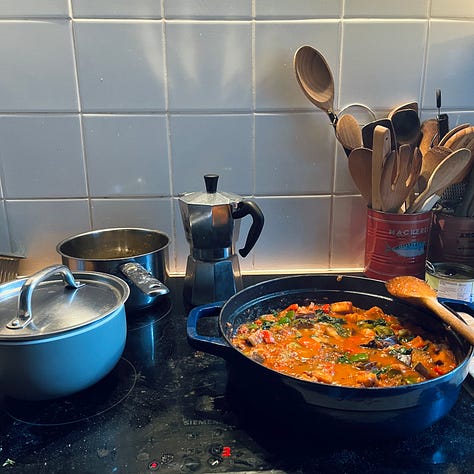
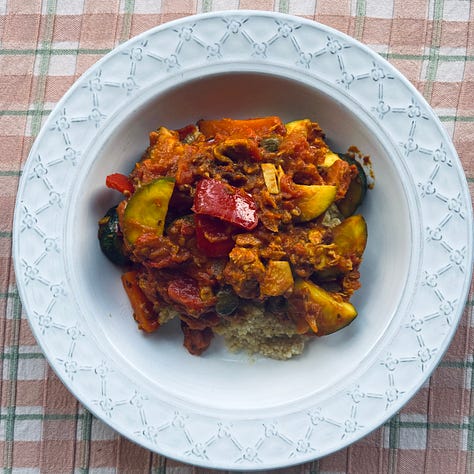
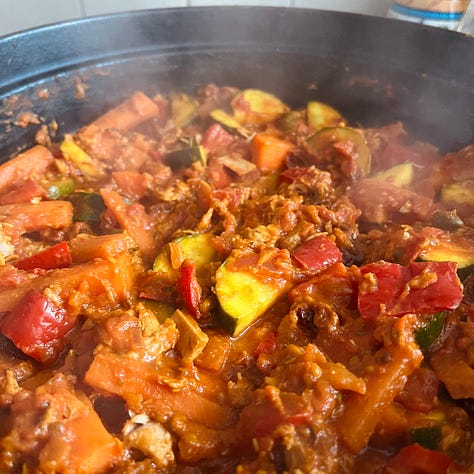
But I am a writer who cooks, not a doctor, so let’s begin with bringing some water to the boil. In a pot, dissolve two stock cubes (I go for one veggie and one onion) inside the boiled water and let the broth simmer. In a separate, heavy-duty pan, heat up the spices of your choice. You have arrived at your first crossed-road – some tips: reserve the paprika for the aubergines; turmeric, always; a few curry leaves and cumin seeds, crushed; a light teaspoon of fennel seeds, as you don’t want them to overtake the rest of the dish, though they perform an anise-like trick, sweet and earthy. After a minute or two, as the spices crisp and engulf you with them, hunching towards the pan to inhale their effusions, trade in and pour a generous amount of olive oil. Reduce the heat. Gently fry the sliced onion (red or white, as you please) with a handful of chopped parsley.
Rx. riverside wanders, searching for hope
If you ever feel nostalgic at the end of a flying trip to London and in the mood for a run or a walk, this is my remedy: starting from the Tower of London, cross Tower Bridge, then follow the south bank until London Bridge. Cross – and follow the north bank until Southwark Bridge. Cross. Repeat. Millennium Bridge, cross; Blackfriars Bridge, cross; Waterloo Bridge, cross; Westminster Bridge, cross and back. (or keep going on to the next bridge, so on until you will feel ready to turn around and be back.)
Following the river, crossing one bridge after the other, the approach is as methodical as the craft of a seamstress — lacing the city from the north to the south bank with my feet, stitching various urban areas with my eyes, being tenderised at the sight of the narrow stone church that still stands, tucked in between two skyscrapers, the sunlight bouncing back against the high windows until the shade of yet another bridge dazzles me. The stink of the water, so warm in May, keeps me grounded. The Seine in Paris, the Saint Laurent in Montréal, the Thames in London, the Arno in Florence, the river Kelvin in Glasgow, each is a body of water I have witnessed through the changing seasons and each has taught me that water, as it streams, is central to the rhythms of a place.
In his latest book, Is A River Alive?, a three-part journey to answer the eponymous question, Robert Macfarlane describes waking up after he had spent much of the night witnessing an episode of mycelial glow in the woods of Los Cedars:
‘When we wake the next morning in the clearing, the light of the mycelium is hidden by the greater light of the sun. The stump looks like any other stump, and the branches like any other branches.
Mist fills the valley folds between distant ridges. Somewhere below us, two toucan barbets call out their counterpoint duet in smoky hoots – hoo-ooh, hoo-ooh, hoo-ooh.
Between the notes of the barbets, I can hear the high, trembling song of the River of the Cedars from down in the gorge, as it is born and born again.’
To take notice of a river’s environment, its smells and colours, fauna and flora, is to reconcile with time as an uncertain measure – the living proof that the present doesn’t prevail the future, our beliefs, principles, morals and actions, or lack thereof, do. Still in Is A River Alive?, Macfarlane writes: ‘Our fate flows with that of rivers, and always has.’ As with the London running route listed above, following a recipe isn’t about the final destination but the loop(s) that are drawn and the knots that are tightened along the way, finding connection(s) between the cook and myself and, potentially, those I am feeding – ways of seeing, experiencing, standing astride between what I do and don’t know, the things I can and those I can’t control.
If the route is the protest, as Audre Lorde puts it: ‘to refuse to participate in the shaping of our future is to give up’, the recipe is hopeful, a process in search of something that has not yet been created.
Rx. remembering to be hopeful
As the onions sizzle in the pan, add some chopped peppers, stir, then pour a ladleful of broth and cook. In a separate bowl, rub some cubed aubergines with paprika, sea salt and sesame oil. Leave aside to marinate. Preheat the oven to 200C. Return to the pan, add some chopped carrots, (frozen) broad beans and a handful of fresh spinach. Pour in a can of tomato sauce, one teaspoon of tomato purée and two of harissa. Swirl, simmer. Toss the aubergines inside an oven dish and bake.
To return somewhere formative is a vertiginous undertaking. When I visit London, when I think about the suburbs of Paris, two places where I have lived for more than half of my life combined, I am met with a void — the figurative expression of the actual distance I can otherwise feel. I hear it ring; it is brief but sharp, like broken glass as it scars my skin. Don’t you remember how it used to be? When we sipped countless espresso coffees on Wednesday afternoons, smoking and remaking the world next to that fountain that never had any water in it, yet hundreds of rusty coins laid inside its bare belly? We spent plenty of time guessing what wishful thinking people had made before us. Summer smelled like a sweet promise then, not grilled. How we danced at that club underneath the rail tracks, how we felt – invincible – until it closed, and we said it was the end of an era without any remorse. The past has more connections with the present than the present does with the future.
‘And so, when you return to the environment from which you came - which you left behind - you are somehow turning back upon yourself, returning to yourself, rediscovering an earlier self that has been both preserved and denied. Suddenly, in circumstances like these, there rises to the surface of your consciousness everything from which you imagined you had freed yourself and yet which you cannot not recognize as part of the structure of your personality - specifically the discomfort that results from belonging to two different worlds, worlds so far separated from each other that they seem irreconcilable, and yet which coexist in everything that you are.’
— Returning to Reims by Didier Eribon
The recipe is a negotiation.
Rx. imagine
At the end of The Silence of the Girls, in which Pat Barker retells The Iliad from the perspective of Briseis, who was enslaved by Achilles after he had besieged Troy, Agamemnon returns. When he cut Polyxena’s throat in front of the women of Troy, Briseis says about ‘the same man who had sacrificed his own daughter in exchange for good wind’ to sail back to the battle of Troy:
‘I looked at him as he turned and walked away and I saw a man who’d learnt nothing and forgotten nothing, a coward without dignity or honour or respect.’
Being hopeless is a lack of imagination. To assume that we as societies and communities could never organise and function differently is a luxury –
‘I keep listening, my ears trained to the sound of repeated bombings, and I feel a strange closeness with Gaza, as well as a desire to hear the shelling from nearby, and to touch motes of dust from the buildings being bombed. The absence of dust brings an awareness of how profoundly far I am from anything familiar, and how impossible it will be to return.’
— Minor Detail by Adania Shibli
Imagine, just imagine as you read this sentence, a world in which we don’t hold civilians accountable for the governments that oppress civilians. A world in which rage is unifying — against capitalism and imperialism and colonialism. There isn’t one recipe for emergency times, but recipes are always in writing. And this is an emergency: there are no words left to describe the images coming from Gaza; do not look away.
The recipe is a protest.
Rx. hope is other and other is hopeful
The French writer George Sand said that life most often resembles a novel than a novel mirrors life. If there is one thing reading novels has taught me, it is that time, as we experience it on Earth, may flow chronologically but its aftermath isn’t linear. Time can hold a grudge and be forgotten; be teaching or silent or blissful; be repetitive or dissonant, contradictory. Time is boring – expected – historical events all happened on yet another day until, in a snap, everything all at once became different. Time doesn’t differentiate. Illness doesn’t compound to doctor hours. A vote isn’t cast at the polling station. A random day may be a turning point but not a single day makes a lifetime.
While the aubergines are in the oven, place the couscous in a bowl, squeeze in some lemon juice and two spoons of dried oregano (or parsley, or sage, or basil or else, or nothing else). Pour in enough broth to cover the couscous. Place a lid on top of the bowl and let it cook for about 10 minutes. Take off the lid and, with the tip of a fork, separate the couscous grains. Combine the baked aubergines with the tomato sauce and mix well. Turn the heat off and let the mixture sit (lid on) for 3-4 minutes.
Kitchen measurements and the failure of the recipe as a rigid form is a good reminder that small actions and takings can reframe how we perceive grand theories. With a little flour and a cup of water, there are few doughs you couldn’t knead; however, in this context, some may rise more than others. Dreams don’t have to be speculative, but they are forces to be reckoned with, interpreted as they intertwine the conscious and the subconscious into a shared space. And, perhaps, this way, a nightmare is an abandoned dream, a scenario that was deemed unlikely or impossible, a door left ajar, haunting ghosts floating in the background.
No straight road is a dream. The recipe is one (of many) way(s).
Rx. hope holds open arms
If I cooked for you before, you would have eaten my couscous. The dish, as I have learnt to prepare it, says you can be home anywhere someone makes some room for you to be as you are, enough for you to become as you would be – sit, take a portion of the cooked couscous, pour in some sauce, sprinkle some sumac on top, have a taste.
In Vulture Capitalism: Corporate Crimes, Backdoor Bailouts and the Death of Freedom, Grace Blakeley debunks the common association that ‘capitalism’ is a synonym for “free markets” and, instead, Blakely demonstrates that ‘capitalism’ means ‘to be ruled by capital’. Blakeley writes:
‘If capitalism is not defined by the presence or absence of markets, but by the domination of society by capital, then socialism is not defined by the presence or absence of planning, but by the democratisation of society. Rather than a system of top-down control, true democratic socialism would be a project of collective liberation, which would allow workers to take control over production and citizens to take control over government.’
I know few people in this world, but I have cooked for plenty of those I know, and plenty of them have cooked for me, more than enough for me to be committed to the idea that societies, at their core, are generous potluck meals. Enough to know that inside each one of them there is a spring streaming down for change. The moment we stop believing in the dictatorship of the recipe, the tyranny of the calorie count, the presentiments for the so-called healthy choice and other trivial rules about pairing ingredients, we will tune in with our appetites. The moment we commit to looking elsewhere in the eyes, we will begin to make decisions for the future.
A meal may be a crowded room, but the recipe is an open road.
margaux
thank you for reading The Onion Papers. i’m margaux, a writer and cook, and this is my hybrid newsletter. if you enjoy my work, remember to subscribe and/or invite friends to the party as you keep me going.
Thursdays are for long reads and Mondays are for annotated (unmeasured) recipes (to paid subscribers), both come out every other weeks. Peels, a writer’s almanac, go to all subscribers on the first Monday of the month. I write novels too.
cooking with fire: an interlude
Inside the bothy, there is no electricity supply but a wood burning stove with a kettle on top. Place firelighters inside the stove’s belly, add the kindling, lay a couple of wood logs over it, then light the first flame and pay attention. There wouldn’t be any sparks without your intervention. Keep the door open to allow enough oxygen in, let the fire …





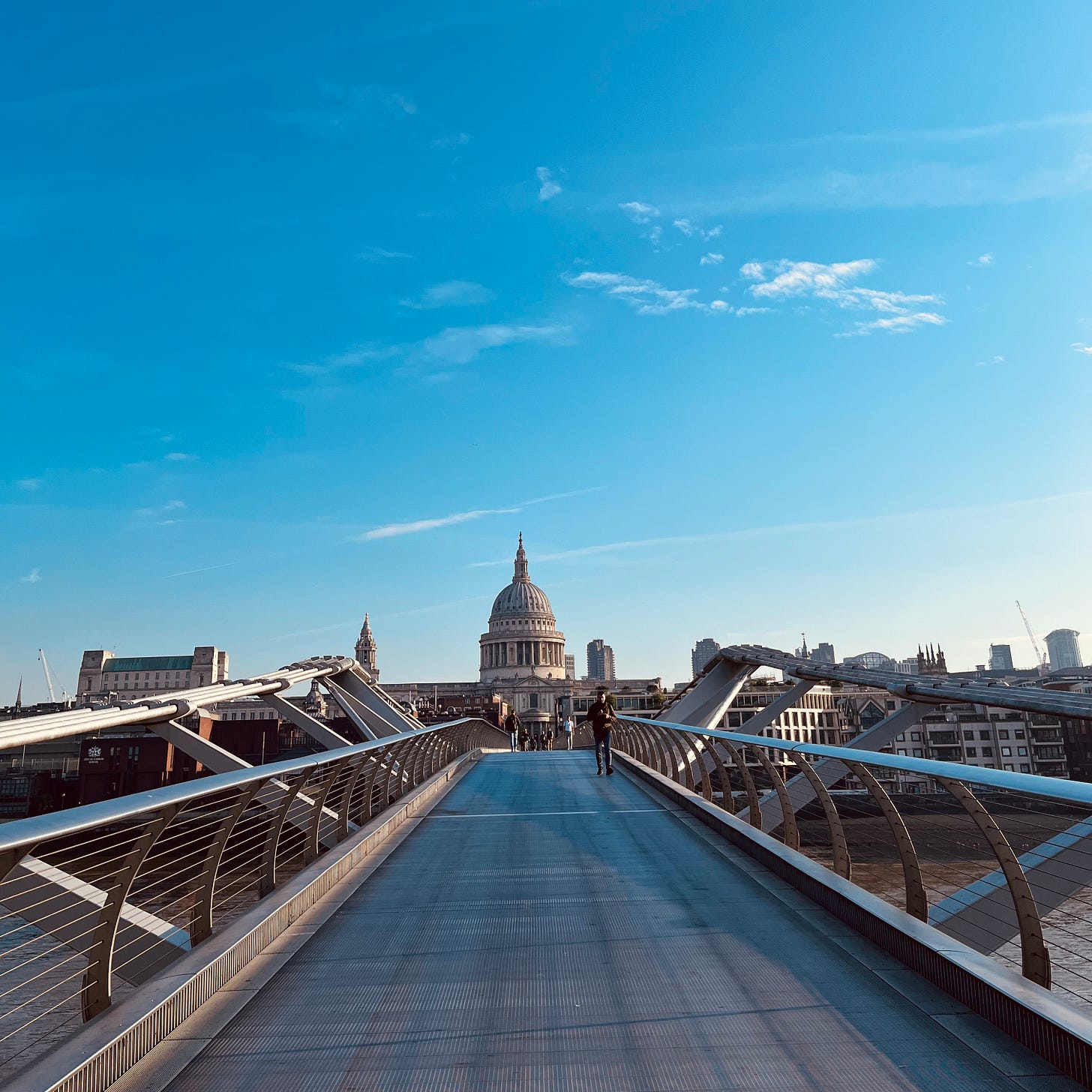
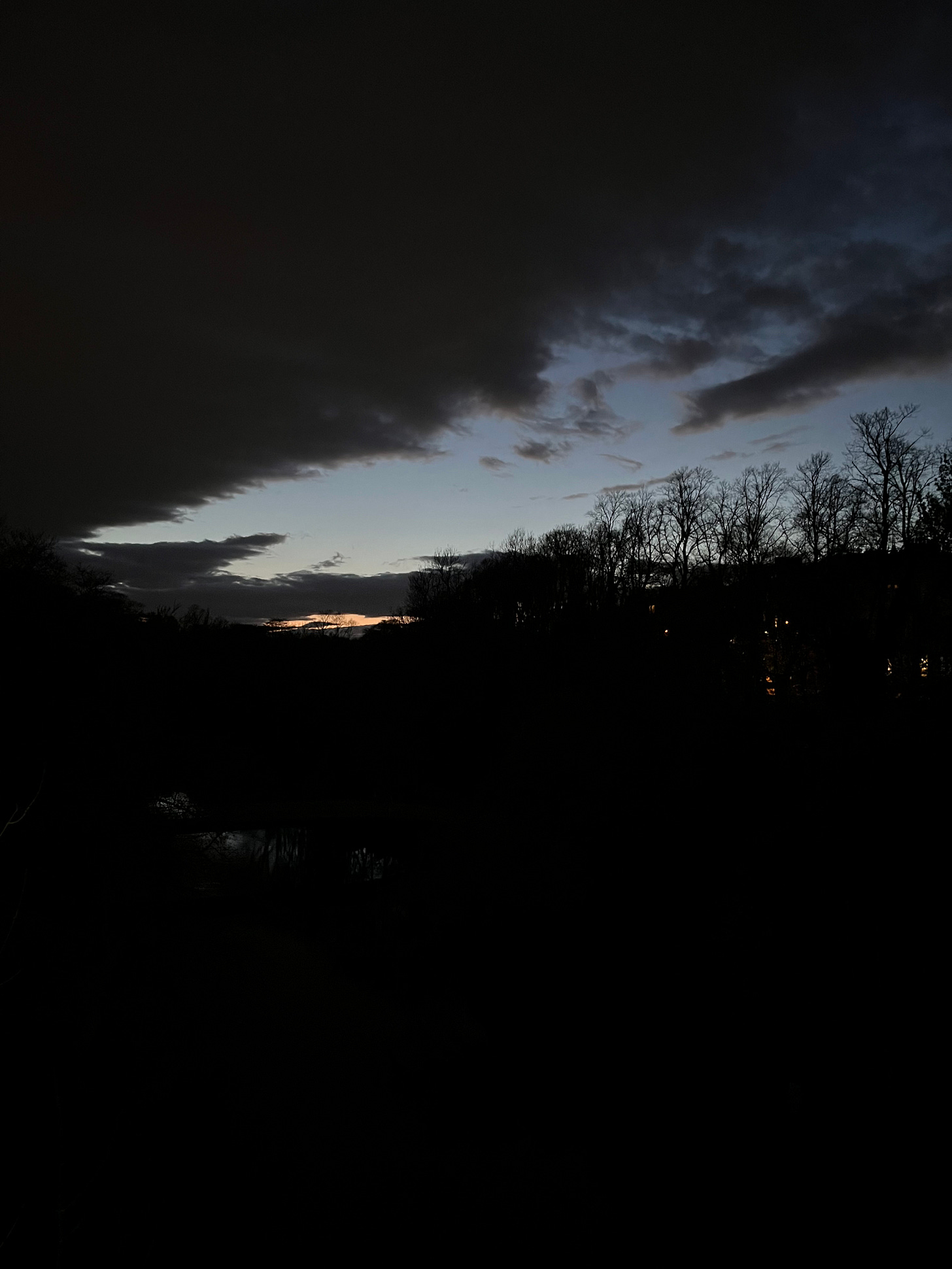

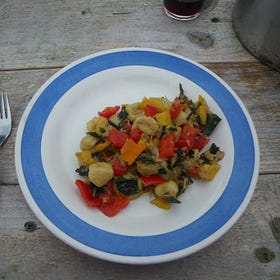
This is marvelous. Thank you.
Margaux, I listened to this over breakfast. What a beautiful way to start the day. Thanks.
Stray thoughts: unlike French, in Spanish, receta means both prescription and recipe.
In Algeria, couscous is cooked differently. You need a very large flat-bottomed bowl. You do indeed pour in some water and oil, (Algerian olive oil is like nothing you've ever smelled or tasted) but then you mix and mix and mix and transfer it to a couscousière, a kind of double boiler. You let it steam and check it. Poke a whole in the middle, and if steam comes up, it's ready to transfer once again to the bowl, where you lay it out and break it up with a wooden paddle. Pour in more water and mix it gently, (careful, it's very hot) then transfer it back to the couscousière. This happens three times at least, or until the couscous is soft all the way through. The sauce, vegetables and beef are cooking in a separate pot, of course.
I love watching the people of Tizi-Ouzou make it. Their hands have knowledge of the ages, and the movements are mesmerising.
Food is hope. Yes, indeed. I pray for the people of Gaza. :)